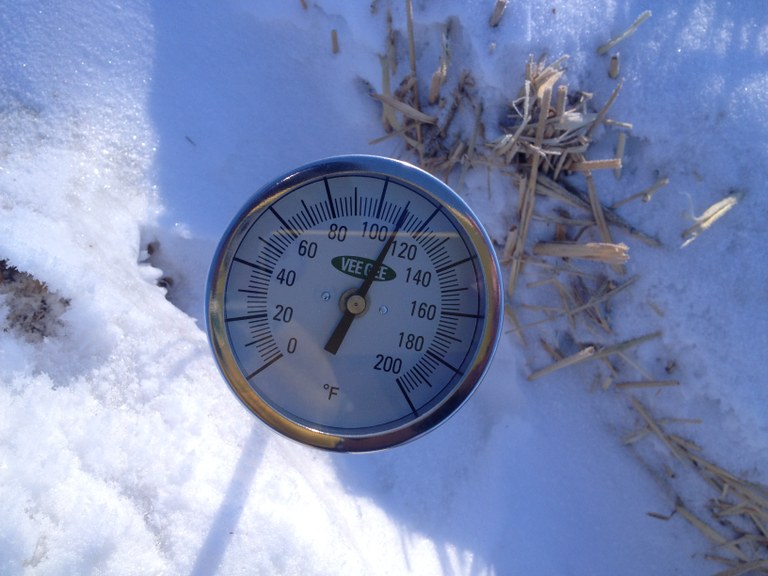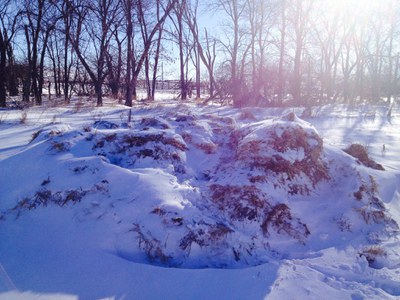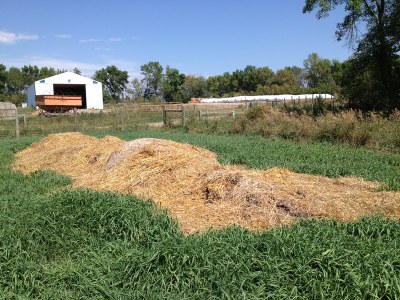Mortality Composting
Internal temperature of a winter livestock mortality compost pile.

Livestock mortalities are an inevitable part of all livestock operations. Rendering, incineration, burial and composting are approved methods of carcass disposal in North Dakota. At the CREC, all livestock mortalities are composted.
Composting is a naturally occurring process that breaks the carcass into basic elements via microorganisms and heat generated during composting. Composting is a simple process that requires few materials and minimal maintenance.
Following are some tips on how to build a successful mortality compost pile or windrow:
- If composting one animal, build a pile.
- If composting several animals, build a windrow.
- You’ll need base material such as straw or old hay, bulking material such as manure or spoiled silage, and cover material such as straw, old hay or sawdust.
Use this process for composting:
- Start with 2 feet of base material in a windrow or circle, depending on how many carcasses will be composted.
- Lay the carcass on top of the base. Lance the rumen of mature cattle to ensure eruption does not occur. Have at least 1 foot of base material between the perimeter of the carcass and the edge of the base.
- Cover the carcass with 8 to 10 inches of bulking material.
- Cover the entire pile or windrow with 2 feet of cover material. The cover material should be placed on the top and sides, with no part of the carcass showing. The pile needs a good cap to keep predators out and seal in heat.
To maintain the compost site:
- Leave the pile or windrow undisturbed to keep heat sealed in during the very cold winter months.
- To accelerate the process, aerate the pile every two months using a loader from early spring until late fall.
- Make sure sufficient cover material always is present.


It is possible to compost livestock mortalities during both cold and hot seasons.
For more information:
- Check out these 2 links to the eXtension Livestock and Poultry Environmental Learning Center. They will provide more information as well as answers to frequently asked questions.
- View the LEM website with step-by-step instructions and photos: http://www.ag.ndsu.edu/lem/resources/animal-mortality-management.
- See NDSU’s “Animal Carcass Disposal Options” publication at http://tinyurl.com/carcassdisposal.
Interested in composting your livestock mortalites during calving this year? Contact me at Mary.Berg@ndsu.edu or 701/652.2951 for on-farm assistance!
Mary Berg
Livestock Environmental Management Specialist


